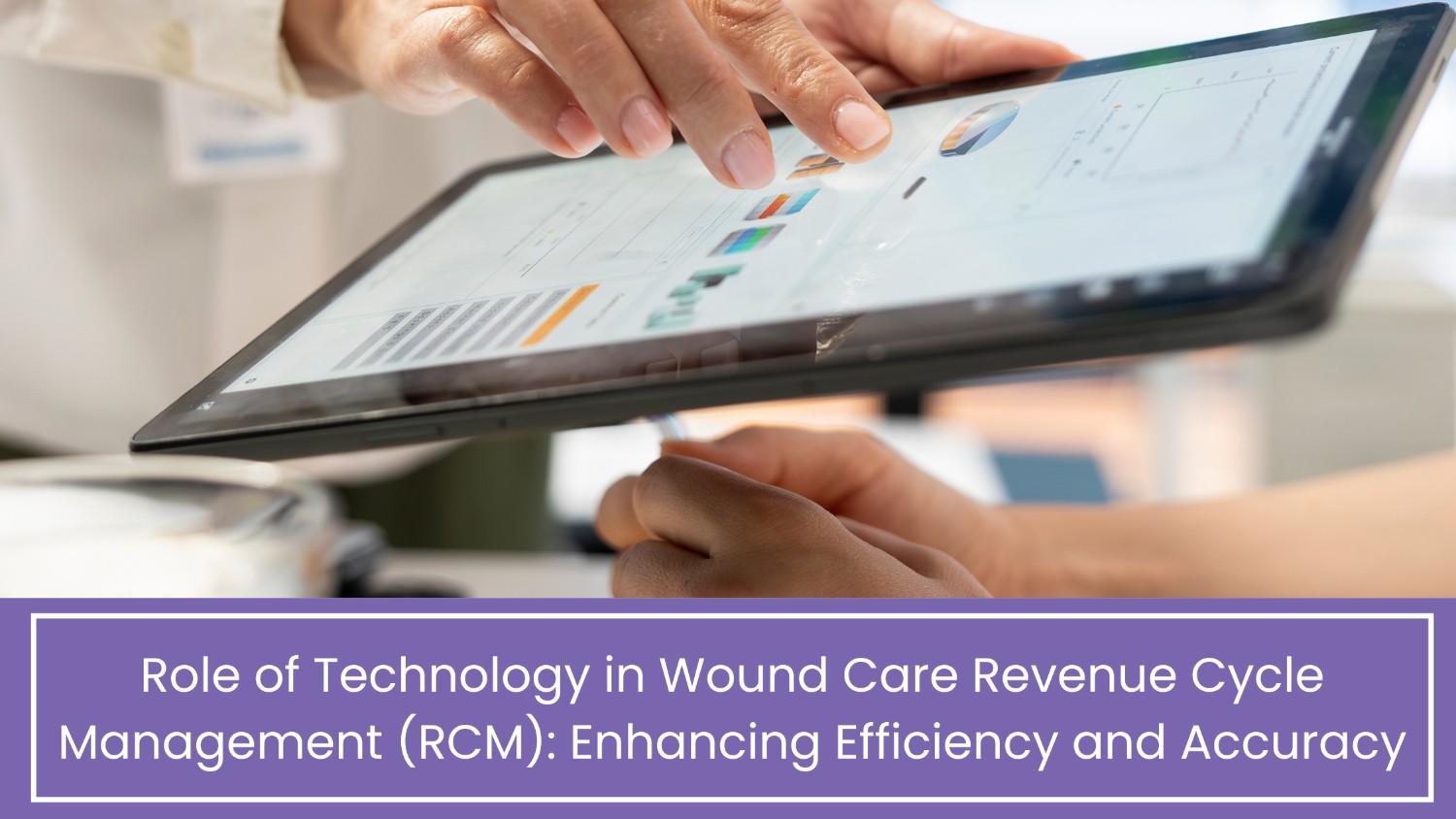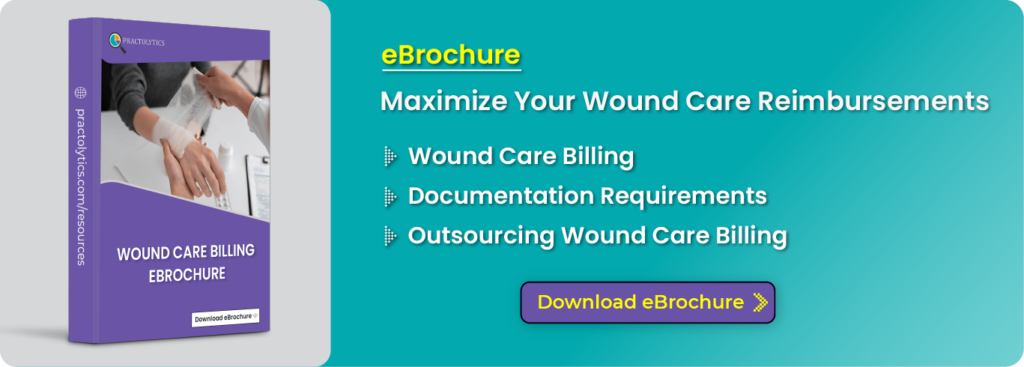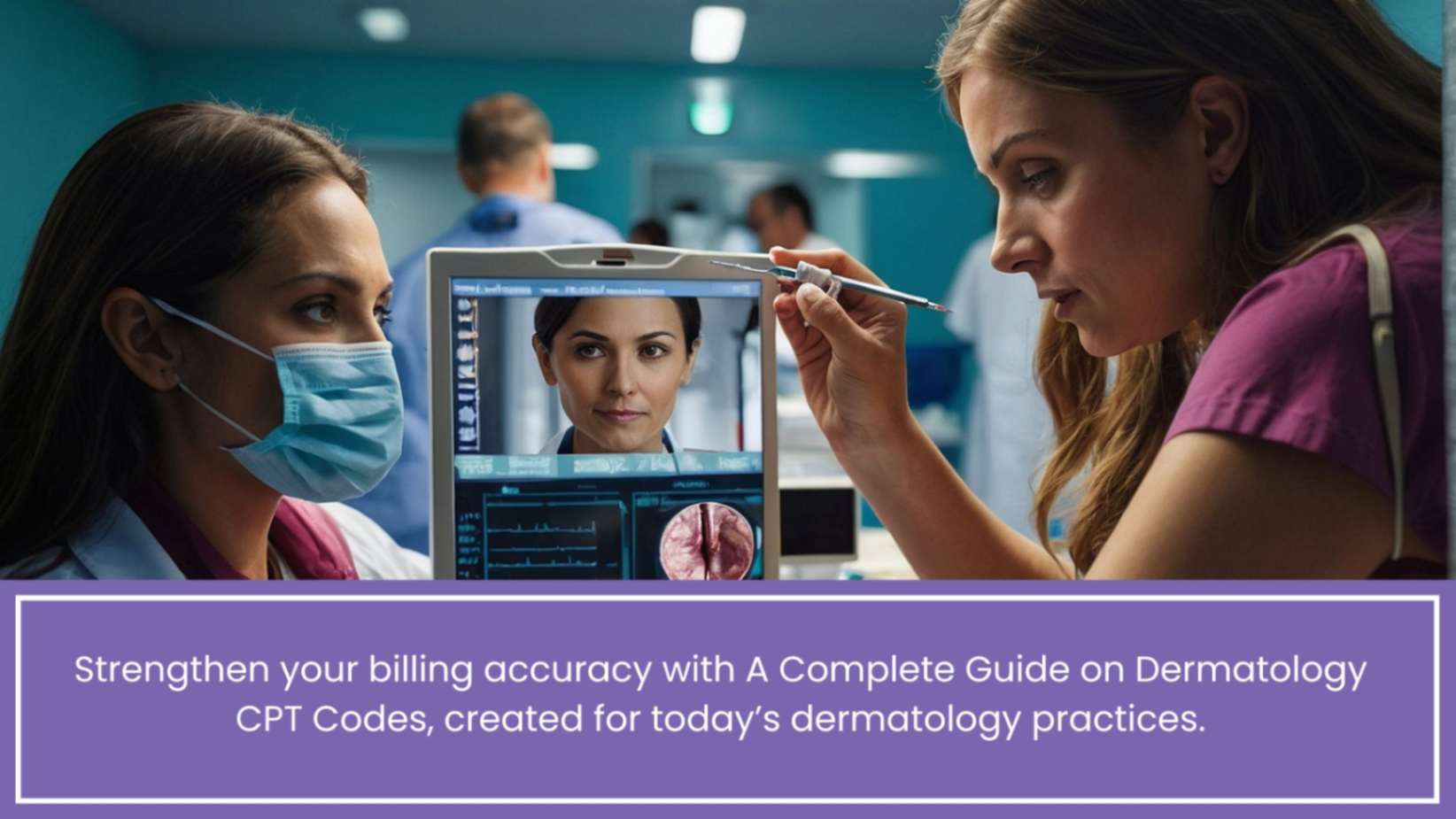Role of Technology in Wound Care Revenue Cycle Management (RCM): Enhancing Efficiency and Accuracy
In the realm of healthcare, wound care revenue cycle management is a critical aspect of patient treatment. Whether it’s a minor cut or a complex surgical wound, proper care is essential for ensuring optimal healing and preventing complications. However, managing the revenue cycle associated with wound care presents its own set of challenges. From accurately documenting procedures to billing insurance companies, healthcare providers must navigate a complex landscape while ensuring efficiency and accuracy. Fortunately, advancements in technology are revolutionizing wound care revenue cycle management (RCM), offering solutions to streamline processes and improve outcomes for both patients and providers.
Table of Contents
Understanding Wound Care Revenue Cycle Management (RCM)
Before delving into the role of technology, it’s essential to grasp the fundamentals of wound care revenue cycle management. The revenue cycle encompasses all administrative and clinical functions associated with patient care, from scheduling appointments to receiving payments. In the context of wound care, RCM involves documenting procedures, coding diagnoses and treatments, submitting claims to payers, and collecting payments.
However, wound care RCM comes with its own set of complexities. Unlike straightforward medical procedures, wound care often involves multiple visits, varying treatments, and a diverse patient population. Furthermore, accurately documenting wound characteristics, such as size, depth, and tissue type, is crucial for determining the appropriate course of action and billing codes. Any inaccuracies or delays in this process can lead to claim denials, reimbursement delays, and revenue loss.
The Challenges of Traditional Wound Care RCM
Traditionally, wound care RCM has been plagued by inefficiencies and inaccuracies inherent in manual processes. Healthcare providers often rely on paper-based documentation and manual coding, which are time-consuming and prone to errors. Additionally, the lack of standardized terminology and coding guidelines can further complicate the billing process, leading to inconsistencies and discrepancies in claims.
Moreover, the fragmented nature of healthcare systems can hinder communication and collaboration among different stakeholders involved in wound care RCM, including clinicians, coders, billers, and insurers. This lack of coordination can result in miscommunication, redundant tasks, and delays in reimbursement, ultimately impacting both patient care and financial sustainability.
Leveraging Technology to Enhance Wound Care RCM
The integration of technology into wound care RCM offers a transformative solution to these challenges, enabling healthcare providers to enhance efficiency and accuracy throughout the revenue cycle. Here are some key ways in which technology is revolutionizing wound care RCM:
- Electronic Health Records (EHRs): EHR systems digitize patient records, allowing clinicians to capture detailed information about wound characteristics, treatments, and outcomes in a standardized format. By integrating wound care documentation directly into the EHR, providers can streamline data capture, reduce errors, and ensure compliance with coding guidelines.
- Clinical Decision Support (CDS) Systems: CDS systems leverage data analytics and evidence-based guidelines to assist clinicians in making informed decisions about wound care management. These systems can help standardize treatment protocols, optimize resource utilization, and improve clinical outcomes, ultimately enhancing the accuracy of coding and billing.
- Telemedicine and Remote Monitoring: Telemedicine platforms enable remote consultations and virtual wound assessments, allowing clinicians to monitor patients’ progress and provide timely interventions without the need for in-person visits. By leveraging telemedicine and remote monitoring technologies, providers can improve patient access to care, reduce healthcare costs, and streamline the billing process.
- Computer-Assisted Coding (CAC) Software: CAC software automates the coding process by analyzing clinical documentation and suggesting appropriate billing codes based on predefined rules and algorithms. By reducing the reliance on manual coding, CAC software can increase coding accuracy, accelerate claim submission, and minimize the risk of denials and rejections.
- Revenue Cycle Management (RCM) Platforms: Integrated RCM platforms offer end-to-end solutions for managing the entire revenue cycle, from patient registration to payment collection. These platforms streamline workflows, automate administrative tasks, and provide real-time visibility into the billing process, enabling providers to optimize revenue capture and improve financial performance.
The Impact of Technology on Wound Care RCM
The adoption of technology in wound care RCM has the potential to drive significant improvements in efficiency, accuracy, and patient outcomes. By automating manual processes, standardizing documentation, and facilitating communication among stakeholders, technology enables providers to streamline workflows, reduce administrative burden, and focus on delivering high-quality care.
Furthermore, technology empowers healthcare organizations to leverage data analytics and predictive modeling to identify trends, track performance metrics, and optimize resource allocation. By gaining insights into patient populations, treatment outcomes, and reimbursement patterns, providers can make data-driven decisions to improve clinical and financial outcomes.
Moreover, technology-enabled solutions such as telemedicine and remote monitoring have the potential to revolutionize the delivery of wound care, particularly in underserved or rural areas where access to specialized healthcare services may be limited. By expanding access to virtual consultations and remote monitoring, providers can enhance patient engagement, improve care coordination, and reduce healthcare disparities.
Overcoming Challenges and Driving Adoption
Despite the clear benefits of technology in wound care RCM, healthcare providers may encounter challenges in implementing and adopting these solutions. Resistance to change, interoperability issues, data privacy concerns, and financial constraints are some common barriers that organizations may face.
To overcome these challenges and drive adoption, healthcare leaders must prioritize investment in technology infrastructure, staff training, and change management initiatives. Additionally, collaboration among stakeholders, including healthcare providers, technology vendors, payers, and regulatory agencies, is essential for developing standardized protocols, ensuring data interoperability, and addressing regulatory compliance requirements.
By embracing a culture of innovation and continuous improvement, healthcare organizations can harness the power of technology to enhance wound care RCM, improve patient outcomes, and achieve financial sustainability in an increasingly complex healthcare landscape.
In short, technology plays a pivotal role in revolutionizing wound care revenue cycle management, offering solutions to enhance efficiency and accuracy throughout the revenue cycle. By leveraging electronic health records, clinical decision support systems, telemedicine platforms, computer-assisted coding software, and integrated RCM platforms, healthcare providers can streamline workflows, improve documentation accuracy, and optimize financial performance.
Moreover, technology-enabled solutions have the potential to transform the delivery of wound care, expanding access to specialized services, improving care coordination, and reducing healthcare disparities. While challenges may exist in implementing and adopting these solutions, proactive investment in technology infrastructure, staff training, and collaboration among stakeholders can pave the way for success.
As the healthcare industry continues to evolve, embracing innovation and leveraging technology will be essential for healthcare providers to thrive in an increasingly digital world and deliver high-quality wound care to patients around the globe.
In the landscape of technology-driven wound care revenue cycle management (RCM), Practolytics stands out as a pioneering solution provider. With our cutting-edge RCM platform, we offer healthcare organizations a comprehensive suite of tools to streamline workflows, optimize revenue capture, and improve patient outcomes. Leveraging advanced analytics, machine learning algorithms, and intuitive user interfaces, Practolytics empowers providers to enhance documentation accuracy, accelerate claim submission, and minimize revenue leakage. Our commitment to innovation, coupled with a deep understanding of the unique challenges facing wound care RCM, positions us as a trusted partner in driving efficiency and accuracy in healthcare billing processes. By partnering with Practolytics, healthcare organizations can unlock the full potential of technology to transform their revenue cycle operations and deliver exceptional care to patients.
RECOMMENDED TO READ – Navigating Home Health and Wound Care Billing: Best Practices for Success
Talk to Medical Billing Expert Today — Get a Free Demo Now!






